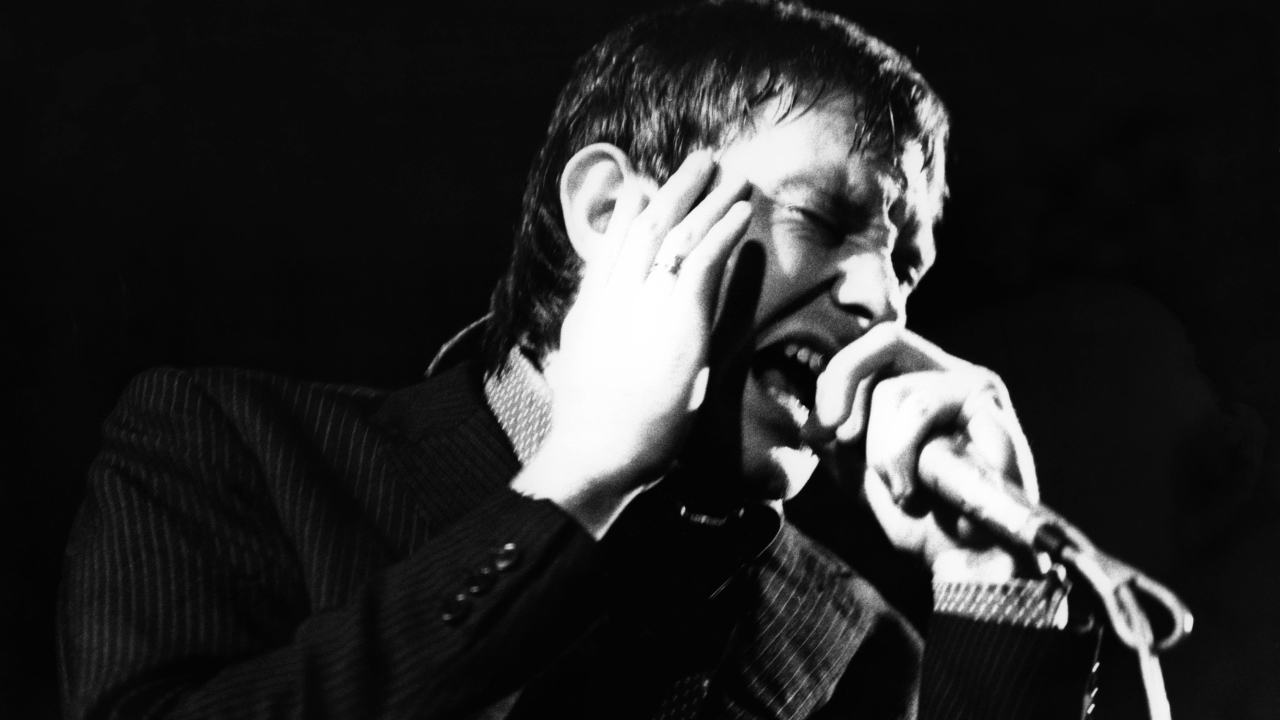You can trust Louder
There were three key moments in Lee Collinson’s teenage life: hearing the Stones, meeting John Wilkinson and watching Howlin’ Wolf in action. The latter was especially pivotal.
Awestruck by Wolf’s aggression, unpredictability and sheer power during a gig in Romford, Collinson funnelled the memory into his own stage persona with Dr. Feelgood. As singer Lee Brilleaux (a reference to the Brillo pad-ish wiriness of his post-gig hair), he revelled in the idea of performing, as he put it, like “a wild, violent nutcase”.
Yet this was a gross over-simplification of what he was all about. Rather, as various ex-colleagues and bandmates testify in Zoë Howe’s excellent biography, Brilleaux was essentially a shy, literate man who became a besuited streetfighter on stage.
Dr. Feelgood’s hard-arsed R&B, with Brilleaux out front and the equally charismatic Wilkinson (aka Wilko Johnson) on guitar, lit up London’s pub rock scene in the early 70s. There was mystique too. The notion of such a band emerging from the tiny enclave of Canvey Island carried a certain alien appeal for the rock press. The NME championed them early on, Nick Kent remarking that Brilleaux “had all the physical grace of a homicidal plumber”.
As the co-author of Johnson’s memoir Looking Back At Me (and wife of Wilko’s drummer, Dylan), Howe is well placed to trace the Feelgoods’ journey from Thames Delta outliers to proto-punk heroes of the British music scene. Life on the road took its inevitable toll, though. With the exception of teetotaller Johnson, the Feelgoods were big boozers, be it knocking back beer or gargling pints of tequila. They once drank the entire profits of their UK tour in a single night.
All of this served to increase the tension between Brilleaux and Johnson (who was sacked in 1977), the nature of their relationship a core feature of the book’s narrative. Each man, it appears, was slightly intimidated by the other without ever daring to admit it. “We got each other so wrong in so many ways,” rues Johnson.
Brilleaux pressed on with the Feelgoods right to the end, determined to keep the flame burning even after he was diagnosed with the Hodgkin’s lymphoma that would eventually kill him, aged just 41, in April 1994. This book goes some way to detailing the often conflicted nature of the forces that drove him, the cultural climate of 70s Britain and the febrile might of his music.
Sign up below to get the latest from Classic Rock, plus exclusive special offers, direct to your inbox!
FINAL VERDICT: 8⁄10
Freelance writer for Classic Rock since 2008, and sister title Prog since its inception in 2009. Regular contributor to Uncut magazine for over 20 years. Other clients include Word magazine, Record Collector, The Guardian, Sunday Times, The Telegraph and When Saturday Comes. Alongside Marc Riley, co-presenter of long-running A-Z Of David Bowie podcast. Also appears twice a week on Riley’s BBC6 radio show, rifling through old copies of the NME and Melody Maker in the Parallel Universe slot. Designed Aston Villa’s kit during a previous life as a sportswear designer. Geezer Butler told him he loved the all-black away strip.


